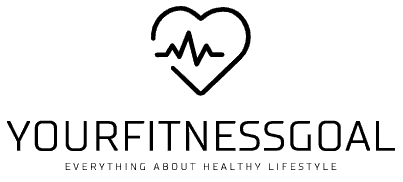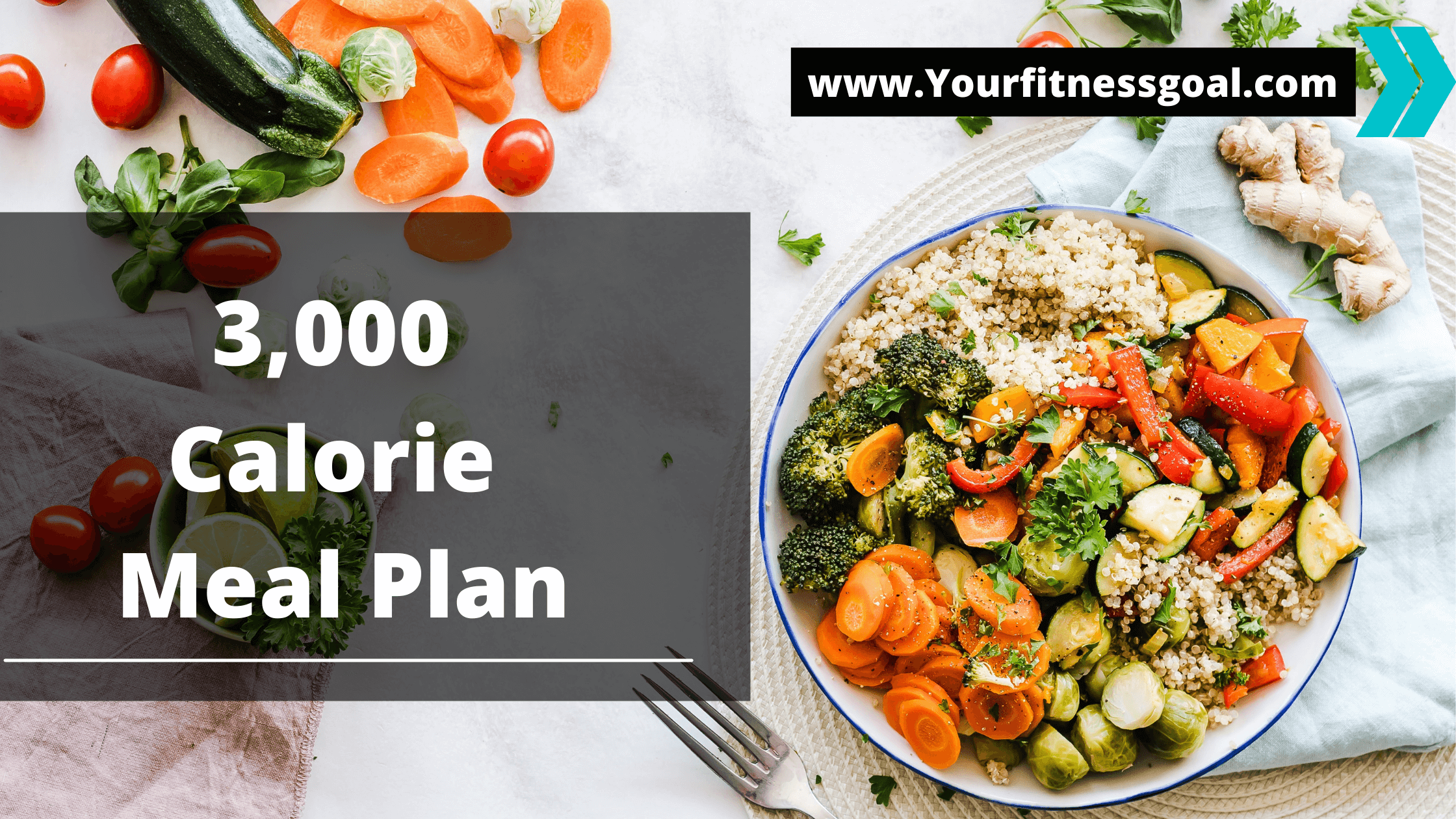A 3000 calorie meal plan, which is considered average, meets the nutritional needs of the majority of people.
However, depending on your level of exercise, body size, and objectives, you may require more.
This article covers all you need to know about a 3000 calorie meal plan, including why you should do it, what foods to consume and how much you should eat, and an example meal plan.
Who Should Eat 3000 Calorie A Day?
The quantity of calories you require every day is determined by a variety of things. Among these are the following:
Gender – In comparison to women, males consume more calories each day. A day’s worth of calories for an adult guy is between 2000 and 3000 calories. Females in their forties and fifties, on the other hand, require 1600 to 2400 calories each day.
Height – In comparison to shorter persons, taller people require more calories to maintain their weight.
Age – As you become older, you require fewer calories. This is due to the fact that as you become older, your body consumes fewer calories when at rest than it did when you were younger.
What you do during the day is referred to as an activity. People who are more active burn more calories than those who are less active. This is due to the fact that calories are to humans what gasoline is to a car. A car traveling a long distance will use more gasoline than one driving around the neighborhood.
Weight-gain objectives — People who want to acquire weight must consume more calories than they expend. To lose weight, people must consume fewer calories than they expend. Because the 3000 calories a day diet is high in calories, it is advised for:
- Those looking to gain weight
- People who are extremely active
- Pregnant women Athletes
Note- Factors like gender, age, height, and activity level influence whether you should follow a 3,000 calorie meal plan.
How Do You Know How Many Calories You Use In A Day?
It is critical to understand how many calories you consume each day in order to choose which diet plan will be most beneficial to you. You don’t want to commit to a diet that won’t help you reach your weight-loss objectives. You’ll need to know your Basal Metabolic Rate ( BMR ) and your activity factor to figure out how many calories you burn in a day.
Your Basal Metabolic Rate (BMR) is an estimate of how many calories you would burn if you spent the whole day doing nothing but resting (24 hours). This is the bare minimum of energy required by your body to keep it running smoothly. This is the energy required for breathing, pumping blood, and keeping your heart beating, among other things.
This figure can be obtained from your gym via an InBody test run, or estimated using a scientific method such as the Harris-Benedict or Mifflin St.-Jeor formula, or an internet calculator that does the arithmetic for you.
Can help you gain weight
Many people want to reduce weight, while others want to gain weight.
When you consume more calories than you burn on a daily basis, you acquire weight. 3,000 calories may be more than your current calorie demands, leading you to gain weight, depending on your activity level and body size.
Reasons To Gain Weight
1. You Want To Gain Muscles
Another motivation to acquire weight is to bulk up your muscles. Athletes, bodybuilders, and others fall into this category. To do this, you must consume more calories and increase your physical activity.
These are some of the reasons why one would wish to put on weight.
2. You Are Underweight
While the majority of individuals struggle with being overweight, there is a subset of the population that is underweight and must acquire weight. You might wonder how to tell whether you’re overweight. Underweight people have a BMI of less than 18.5. This is due to the fact that it is considered to be less than the body mass required to maintain optimum health.
Low immunity as a result. Being underweight may wreak havoc on your immune system and put you at risk of illness.
The following are some of the reasons why a person may be underweight:
- It’s possible that the individual suffers from an eating disorder. Anorexia nervosa is one such case.
- Thyroid issues are at the root of the problem. Hyperthyroidism can induce an increase in metabolism and, as a result, harmful weight loss.
- Diabetes. Type 1 diabetes is known to cause significant weight loss.
- Cancer.
- HIV/AIDS is a disease that affects millions of people worldwide.
- Recent sickness or a time of restricted eating
- If you are underweight, you should consult with a doctor or an expert in the subject.
Safe rate of weight gain
While research on the subject is limited, a healthy weight growth rate is 0.5–2 pounds (0.2–0.9 kg) each week.
Weight gain of roughly 4.4 pounds (2 kg) per week has been achieved safely in persons with severe malnutrition (12Trusted Source).
Rapid weight gain is associated with bloating, gastrointestinal discomfort, and fluid retention. If you’re a sportsperson, these side effects might detract from your performance by interfering with your exercises or sessions (13Trusted Source).
Furthermore, fast weight gain can elevate triglyceride levels, thus increasing the risk of heart disease (14Trusted Source, 15Trusted Source).
The amount of calories you require to maintain your weight determines how quickly you acquire weight.
On a 3,000 calorie meal plan, someone who maintains their weight on 2,000 calories per day would gain weight significantly faster than someone who maintains their weight on 2,500 calories per day.
In one 8-week trial, 25 healthy people gained an average of 11.7 pounds (5.3 kg) when they ate 950 calories more than their weight-maintenance calorie needs (3.5 kg) of fat (16Trusted Source).
Those same participants would acquire substantially less weight if they ate merely 500 calories more than their maintenance calorie needs for the same amount of time.
Carbohydrates are comparable to 60% of 3000 calories, or 1800 calories. Since every four calories equal one gram of carbohydrates, 1800 calories equal 450 grams of carbs.
In the case of fats, 30% of 3000 calories equals 900 calories. Because every nine calories equal one gram of fat, 900 calories equal 100 grams of fat.
Proteins are comparable to 10% of 3000 calories, or 300 calories. Because every four calories equal one gram of protein, 300 calories equate to 75 grams of protein. If you’re really active, you could need more protein than this to grow weight and muscle.
How To Follow A 3000 Calorie meal plan

You must acquire nutrients from carbs, proteins, and lipids in order for a diet to be effective. Carbohydrates should account for about 60% of your entire calorie intake. Thirty percent should be fats, and the remaining ten percent should be proteins.
One thing you should know is how many calories each of these macronutrients has in a gram. Proteins and carbs have four calories per gram, whereas fats have nine calories per gram. As a result, you can figure out how many grams of each macronutrient you need to consume.
Carbohydrates are comparable to 60% of 3000 calories, or 1800 calories. Since every four calories equal one gram of carbohydrates, 1800 calories equal 450 grams of carbs.
In the case of fats, 30% of 3000 calories equals 900 calories. Because every nine calories equals one gram of fat, 900 calories equal 100 grams of fat.
Proteins are comparable to 10% of 3000 calories, or 300 calories. Because every four calories equal one gram of protein, 300 calories equate to 75 grams of protein. If you’re really active, you could need more protein than this to grow weight and muscle.
Foods To Eat To Maintain A 3000 Calorie meal plan
Due to the high-calorie content of this diet, you may be tempted to eat harmful foods in order to reach the three thousand calorie mark. Although highly processed refined meals are sweeter and contain more calories, they are devoid of essential nutrients. Try to eat whole, unprocessed, or lightly processed foods as much as possible.
Here are some of the nutritious foods you should incorporate in your diet:
- Proteins. You should incorporate both animal and plant-based proteins in your diet. Fish, turkey, salmon, eggs, beef, and other animal-based proteins are examples. Peas, lentils, chickpeas, peanuts, spirulina, quinoa, chia seeds, hemp seeds, and other plant-based proteins are examples.
- Dairy. Different forms of dairy products, such as Greek yoghurt, natural cheese, milk, and the like, should be included.
- Oils and fats Foods containing fats, such as almonds, olive oil, and peanut butter, should be included.
- Fruits. This is self-explanatory. Include a variety of fruits in your daily diet. Apples, avocados, and bananas should all be included. fruits such as oranges, berries, and the like
- Vegetables. Vegetables are extremely significant and provide a lot of nutrients. Kale, spinach, cabbages, and broccoli should all be included in your diet.
So, what are some of the foods you should stay away from?
Fried meals should be avoided as much as possible. French fries, onion rings, doughnuts, and other similar foods fall under this category.
It’s also a good idea to stay away from fast food. Yes, that double patty cheeseburger, that pepperoni pizza, and the like should be avoided.
Soft drinks and meals with a lot of sugar should also be avoided. Candy, sodas, ice creams, chocolates, and other sugary foods should be avoided.
Refined carbohydrates should also be avoided, such as those found in cookies, pastries, sugary cereals, and the like.
How To Divide Your 3000 calorie meal plan
You must split the items in a sensible manner in order to ingest 3000 calories of healthful foods. Three meals and two snacks would be the most sensible method to consume 3000 calories.
Foods in the following proportions should be consumed:
There are ten ounces of grains. One slice of bread, or half a cup of cooked pasta, rice, or cereal, equals one ounce of grain. It also counts as one ounce of cereal that is ready to consume.
4 cups of mixed veggies One cup of vegetables equals one cup of cooked vegetables, two cups of leafy salad greens, or one cup of vegetable juice.
Fruits, two and a half cups Half a cup of dried fruit or one cup of 100% fruit juice equals one cup of fresh fruit.
Three mugs of journal One cup of dairy equals one cup of milk, yogurt, fortified soy beverage, one and a half ounces of natural cheese, or two ounces of processed cheese.
Protein meals in the amount of seven ounces Cooked lean meats, poultry, or seafood are counted as one ounce of protein foods. It also qualifies as a quarter cup of cooked beans or peas or one spoonful of peanut butter. Half an ounce of nuts or seeds counts as well .
Sample Meal Plan For 3000 Calories A Day
Despite the fact that we have provided you with the appropriate measurements for each food, you should still take them. Here are some samples of 3000 calorie daily food meal plans for persons of various weights, weight goals, genders, heights, ages, body fat percentages, and activity levels.
- Breakfast: 1 cup (80 grams) oats, 1 cup (240 milliliters) dairy or plant-based milk, 1 sliced banana, and 2 tablespoons (33 milliliters) peanut butter
- Snack: 1 cup (80 grams) dry cereal, 1/4 cup (30 grams) granola, 1/4 cup (34 grams) dried fruit, and 20 almonds in a trail mix
- Lunch: 1 cup (100 g) spaghetti with 3/4 cup (183 g) tomato sauce and 4 ounces (112 g) cooked minced beef, plus 1 medium breadstick with 1 tablespoon (14 g) butter -Snack: 1 cup (226 g) cottage cheese and 1/2 cup (70 g) blueberries
4 ounces (110 grams) salmon, 1 cup (100 grams) brown rice, and 5 asparagus spears for dinner.
or
- Breakfast: 3 whole-wheat waffles with 2 tablespoons (33 grams) peanut butter, 1 orange, and 2 cups (480 milliliters) dairy or plant-based milk
- Snack: 1 granola bar with nuts and 1 ounce (28 grams) of almonds
- Lunch: 6 oz (170-gram) 1 1/2 cup (86 grams) of homemade sweet potato fries cooked in olive oil, as well as a 90 percent-lean burger on a whole-wheat bun with 1 tomato slice and lettuce leaf.
- Snack: 1 cup Greek yogurt (227 grams) and 1 cup strawberries (140 grams)
Note – These 3,000 calories comprise lean proteins, healthy fats, fruits, and vegetables, among other nutrient-dense meals.
Conclusion
A 3,000 calorie meal plan to gain muscle may help you maintain or gain weight depending on numerous factors, including your exercise level and body size.
Whole, minimally processed foods including fruits, vegetables, whole grains, healthy fats, and lean meats should make up the majority of your diet, if not all of it.
Highly processed refined meals, such as bacon, potato chips, sweets, cookies, sweetened cereals, and sugary beverages, on the other hand, should be avoided.

Hey, y’all! I’m Akshay!
I’m SO excited you’re here! I’m super passionate about nutrition and specialize in teaching others how to lose weight through healthy, low-carb eating along with Yoga and exercises. Here at Yourfitnessgoal, we believe in quality over quantity and that diet is EVERYTHING when it comes to your health and well-being. In short, we believe in a Fit and healthy lifestyle.

